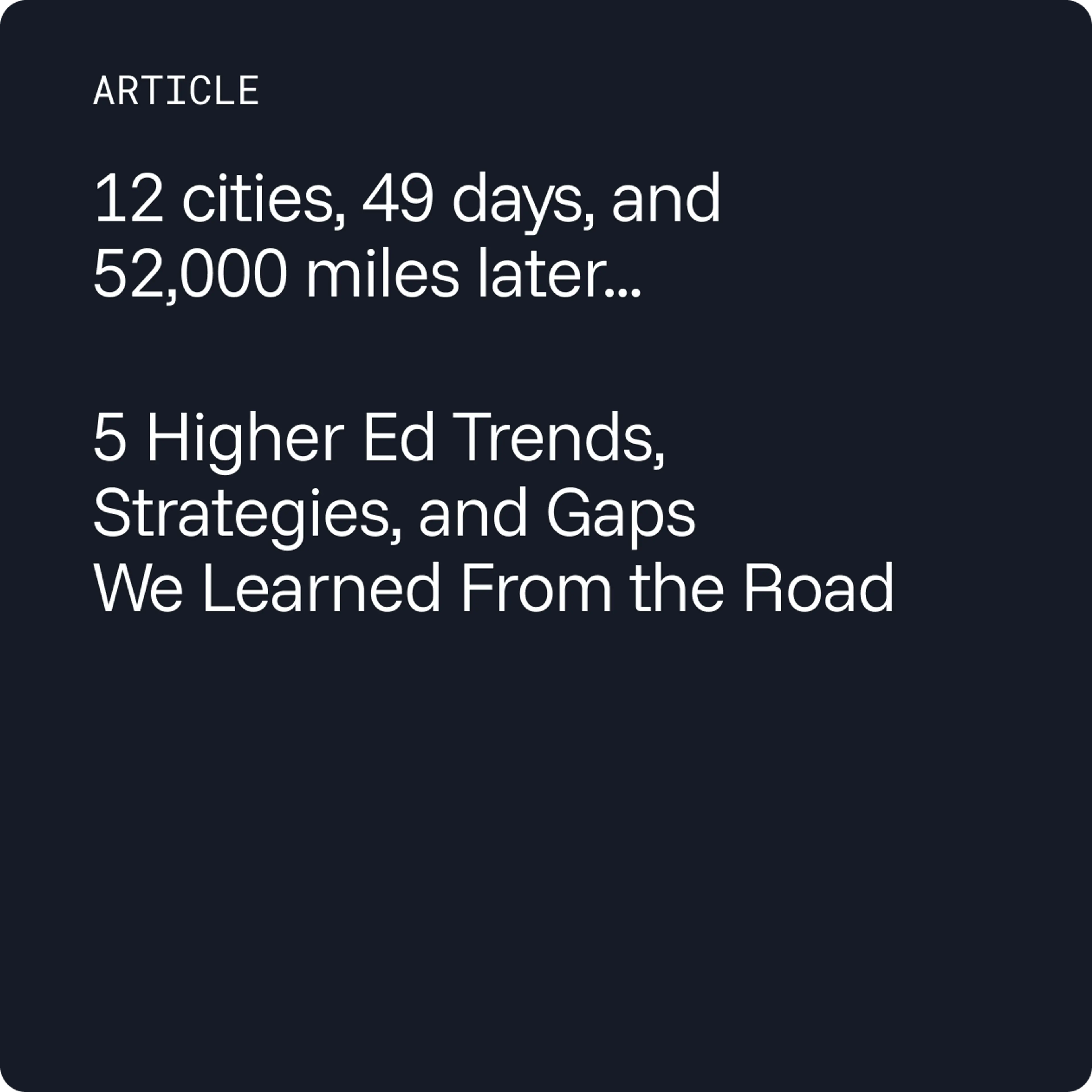
From “Student” to “Learner”: Reflecting on the Language of Higher Education
Authored by Tom Black
Strategic Partner, Higher Education
Words matter. They shape how we see the world and how we shape the systems within it. For as long as any of us can remember, those pursuing education beyond high school have been called “students.” We build policies around them, design systems for them, and even legislate on their behalf. But as the makeup of our campuses shifts and the pathways through higher education diversify, I find myself wondering: Is “student” still the right word? Or is it time to embrace a broader, more inclusive term: “learner”?
The Changing Face of Higher Education
If you walk across any college campus today — physical or virtual — you’ll encounter an extraordinary range of individuals pursuing learning. Yes, there are still 18-year-olds arriving straight from high school, but they’re now part of a far more complex landscape. Increasingly, those enrolling in postsecondary programs are people returning to school after years in the workforce, veterans reskilling for a new career, parents completing degrees they started decades earlier, and professionals pursuing microcredentials to stay competitive in rapidly changing industries.
In fact, nearly 58% of today’s undergraduate population is “post-traditional,” a term that itself reflects our evolving reality. And yet, our systems and structures - perhaps most tellingly, our language — still largely revolve around a picture of the full-time, residential 18-year-old student.
“Learner” as an Inclusive, Asset-Based Lens
The American Association of Collegiate Registrars and Admissions Officers (AACRAO) has been pushing this conversation forward with its 2025 work on Learning Mobility. In that report, they define learning mobility as “a learner-centered innovation, where systems, processes, programs, and initiatives must be designed around the needs and best interests of the learner of today and the future at every stage of their journey.”
Notice the language: learner, not student. This is more than semantics. It’s a deliberate, asset-based shift — one that recognizes the value of the diverse experiences, cultural backgrounds, and skills individuals bring to their educational journey. It’s about seeing people not as passive recipients of education but as active participants who continue learning in formal and informal settings, across multiple institutions, and throughout their lives.
An asset-based approach reminds us that diversity in age, experience, and circumstance isn’t a barrier to education — it’s a resource that enriches the learning environment. And when we build policies, technologies, and support systems with that mindset, we create conditions that help people succeed not in spite of their differences, but because of them.
Language as a Catalyst for Systemic Change
Of course, this shift won’t happen overnight. Government reporting systems, for example, still require institutions to submit data about “students,” and countless programs, offices, and organizations have the word baked into their names. As AACRAO’s analysis points out, the term student appears hundreds of times in their own report — most often in legacy contexts or statistical references.
But the language we choose in our day-to-day work, and how we frame the people we serve, can influence how quickly systems catch up. When we talk about “learners,” we begin to design for learners: policies that support part-time and stop-out pathways, advising models that adapt to career pivots, and credentialing frameworks that recognize skills gained outside traditional classrooms.
The American Council on Education defines “learner success” as the “lifelong ability to identify relevant educational experiences, make measurable progress toward educational goals, and complete the postsecondary credentials necessary to achieve one’s life purpose.” That’s a far more dynamic and holistic vision than the one implied by the word “student.”
Beyond Semantics: A Call to Reflection
This is not an argument for abandoning tradition for tradition’s sake. “Student” will remain part of our vocabulary, and likely our reporting structures, for some time. But I believe it’s worth asking ourselves: What does our language say about who higher education is for?
If our words continue to center a shrinking demographic, we risk building systems that do the same. And if our goal is truly to empower all people to pursue learning throughout their lives — to advance economically, socially, and culturally — then perhaps our language should reflect that mission.
So I pose the question back to you, my colleagues and fellow travelers in higher education: Is it time to retire “student” in favor of “learner”? Or, at the very least, to expand our vocabulary so it better reflects the evolving landscape we serve?
I don’t have a definitive answer. But I do believe that how we speak about learning and those who engage in it will shape the next era of higher education. And that’s a conversation worth having.
Tom Black is a Strategic Partner at Stellic and an Honorary Member of AACRAO. He has served over four decades in leadership roles at institutions including Johns Hopkins, Stanford, Chicago, Duke, and UNC-Chapel Hill.



